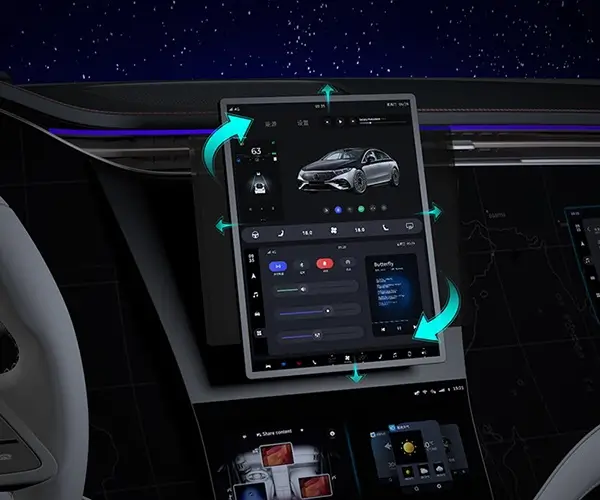Connecting an Arduino to a servo motor may sound like a challenging task, but once you break it down, it’s surprisingly simple and fun! Whether you’re working on a DIY project, a robotics prototype, or just exploring the world of electronics, this step-by-step guide will help you understand how to easily control a servo motor using an Arduino. Trust me, you’ll be amazed at how quickly you can get it up and running.

What’s a Servo Motor Anyway?
A servo motor is a type of motor that allows for precise control of angular position. It's commonly used in robots, RC cars, and even camera equipment. Unlike regular motors, servos come with built-in controllers, which means you don’t have to worry about setting up a complex circuit. You just send it a signal, and it moves to a specific position. This makes servos great for projects where precision and control matter.
The Setup
Before we dive into the coding and wiring, let’s gather the basics. All you need is:
- An Arduino board (like the Arduino Uno)
- A servo motor
- Jumper wires
- A power source (for the servo)
Now, the most important part: wiring. The servo motor usually has three wires: power (often red), ground (black or brown), and signal (yellow or orange). The key here is to connect these properly:
- Power: Connect the servo's power wire to the 5V pin on the Arduino.
- Ground: Connect the servo's ground wire to the GND pin on the Arduino.
- Signal: This one goes to any PWM (Pulse Width Modulation) pin on the Arduino (typically pin 9 is a good choice).
Now, just double-check everything—because nothing’s worse than a project that doesn’t work because of a small mistake.
Writing the Code
Once the hardware is in place, you can start coding. It’s easier than it sounds. The Arduino IDE makes things simple with a built-in library for controlling servo motors. Here’s a simple sketch (that’s what Arduino code is called):
#include <Servo.h>
Servo myServo;
void setup() {
myServo.attach(9); // Pin 9 is where the servo is connected
}
void loop() {
myServo.write(0); // Move the servo to 0 degrees
delay(1000); // Wait for a second
myServo.write(90); // Move the servo to 90 degrees
delay(1000); // Wait for a second
myServo.write(180); // Move the servo to 180 degrees
delay(1000); // Wait for a second
}
This code does something pretty simple: it moves the servo between three positions (0, 90, and 180 degrees). You can easily change the angles or add more complex patterns. The key is the myServo.write() function, which tells the servo where to go.
Why Choose KPOWER?
You might wonder: "Why should I choose KPOWER for my servo motor needs?" The answer is simple. KPOWER offers reliable, high-quality servo motors that are designed to be both durable and precise. Whether you're a hobbyist or a pro, you need motors that won’t let you down. And with KPOWER, you know you're getting products that will support your projects for the long haul.
Plus, KPOWER products are user-friendly. You don’t need to be an expert to get started—just follow the basic steps above and let the motor do the rest. They also offer fantastic customer service, helping you troubleshoot anything that might come up.
The Benefits of Using Arduino with a Servo Motor
What’s great about combining Arduino and servos? You can automate almost anything. From opening and closing doors in a robot to controlling camera angles for a drone, the possibilities are endless. Once you get the hang of the basics, you can start exploring more advanced features, like using sensors to trigger servo movement.
For example, if you add a light sensor, you could program your Arduino to move the servo when it detects changes in light. Or, you could link the servo to a Bluetooth module, giving you remote control over your motor from your phone. The creativity is all in your hands!
Wrapping Up
Getting an Arduino to control a servo motor is one of the most satisfying beginner projects. It's an easy win for anyone wanting to get their feet wet in electronics or robotics. With just a few simple steps, you can bring your ideas to life. And with reliable servo motors from KPOWER, your project will have the precision and performance it needs to succeed.
Ready to start? Your Arduino and servo motor are waiting to work together!
Established in 2005, Kpower has been dedicated to a professional compact motion unit manufacturer, headquartered in Dongguan, Guangdong Province, China. Leveraging innovations in modular drive technology, Kpower integrates high-performance motors, precision reducers, and multi-protocol control systems to provide efficient and customized smart drive system solutions. Kpower has delivered professional drive system solutions to over 500 enterprise clients globally with products covering various fields such as Smart Home Systems, Automatic Electronics, Robotics, Precision Agriculture, Drones, and Industrial Automation.




































